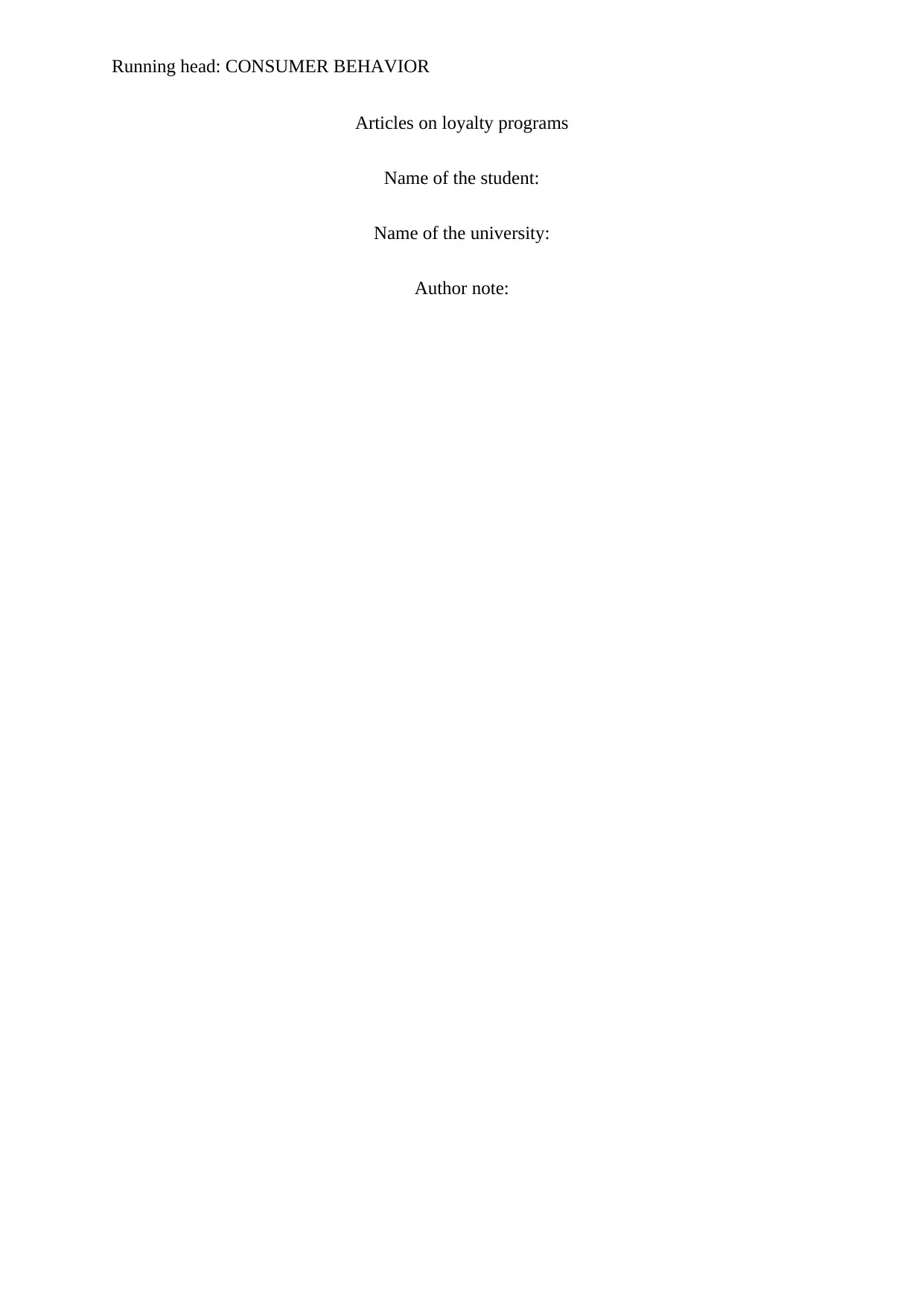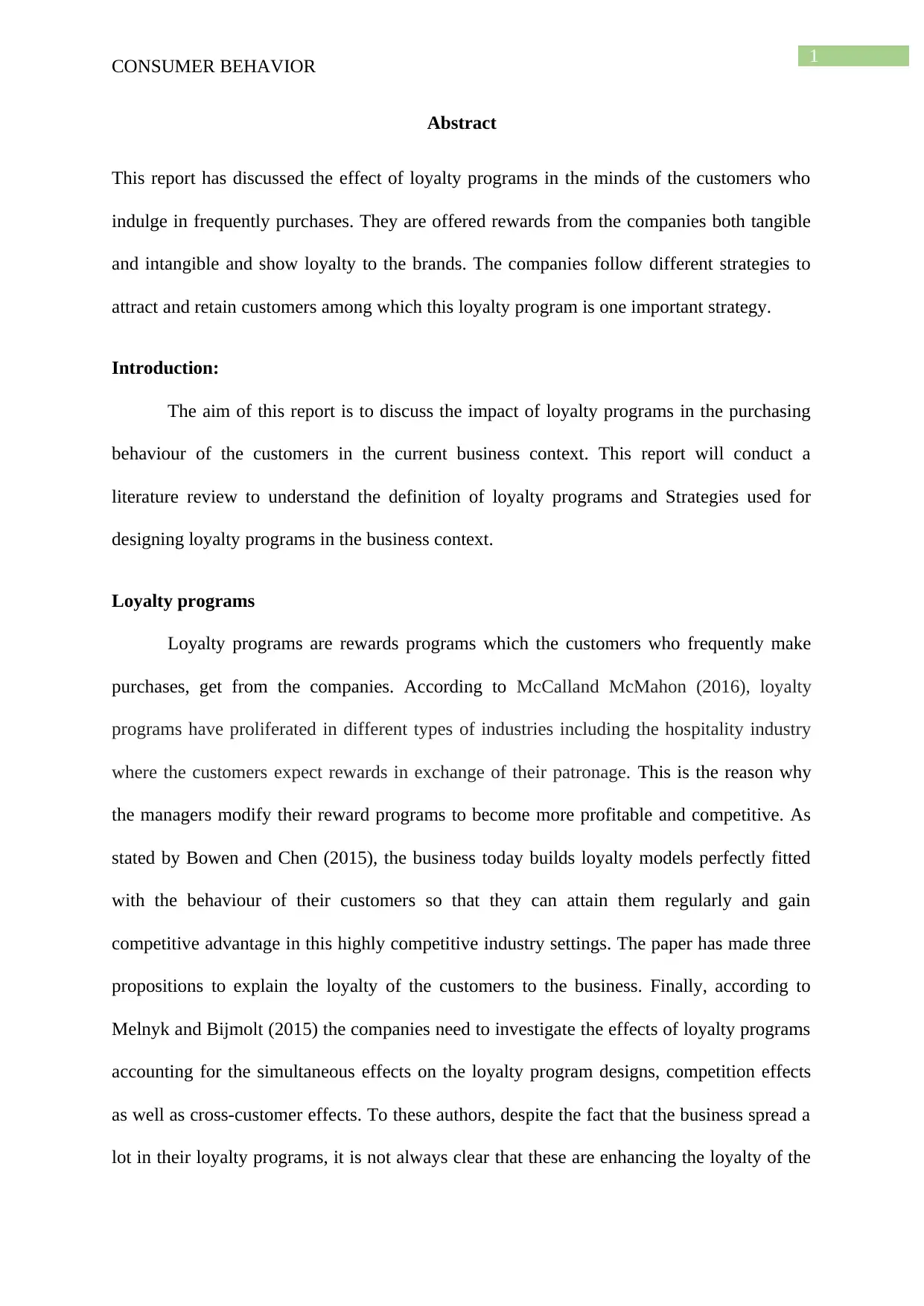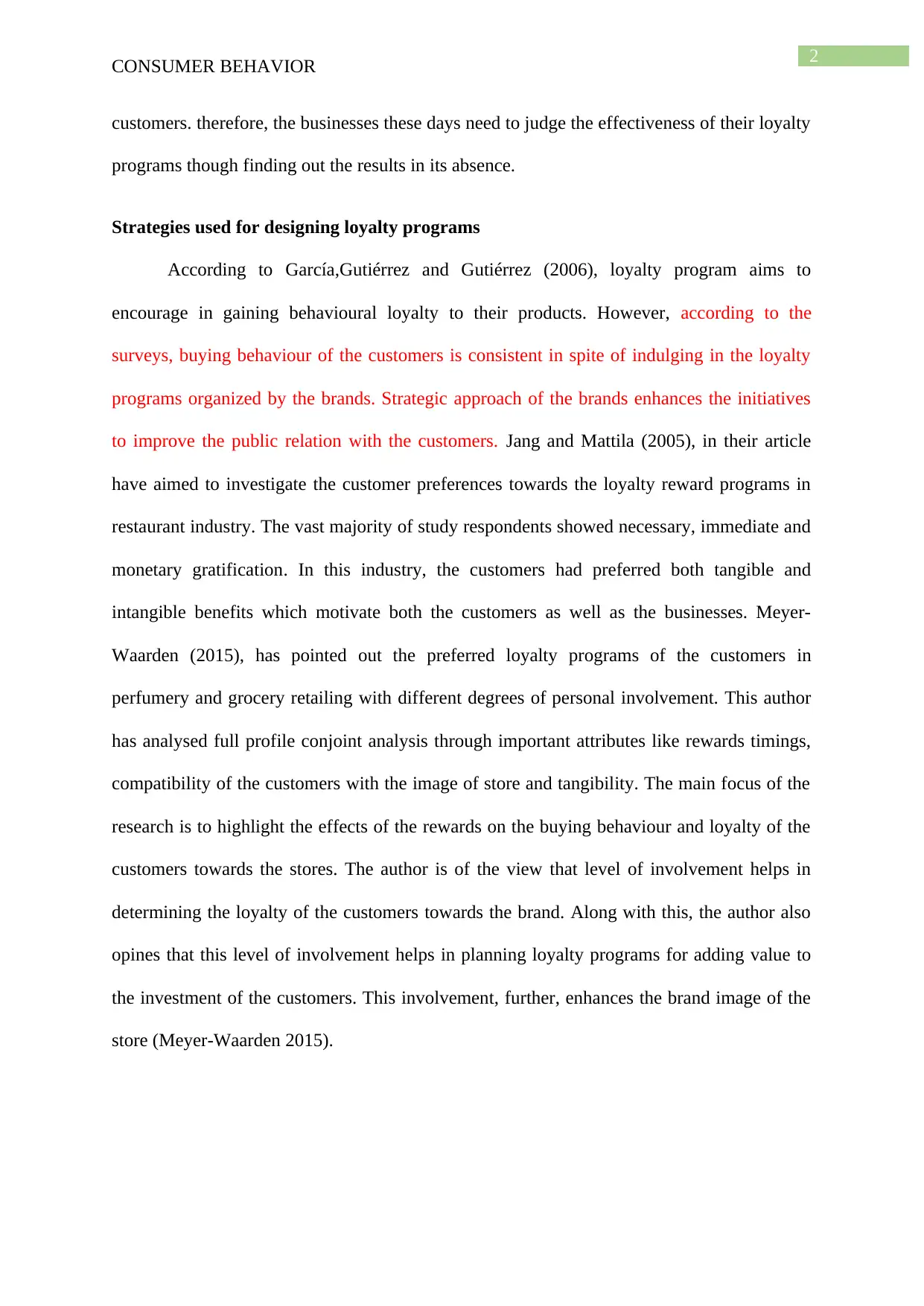A Report on the Influence of Loyalty Programs on Customer Behavior
VerifiedAdded on 2023/06/05
|4
|871
|485
Report
AI Summary
This report delves into the influence of loyalty programs on consumer purchasing behavior. It begins with an abstract highlighting the core focus on how loyalty programs, offering both tangible and intangible rewards, foster customer loyalty. The introduction emphasizes the significance of loyalty programs in the current business environment, conducting a literature review to define them and explore the strategies businesses employ. The report references key research, including McCalland McMahon (2016), Bowen and Chen (2015), and Melnyk and Bijmolt (2015), to illustrate the evolving nature of these programs and the importance of adapting to customer behavior. It discusses various strategies for designing loyalty programs, such as those encouraging behavioral loyalty, as highlighted by García,Gutiérrez and Gutiérrez (2006). The report also examines customer preferences in industries like restaurants (Jang and Mattila, 2005) and retail (Meyer-Waarden, 2015), focusing on rewards and levels of customer involvement to understand their impact on brand loyalty. The report concludes by emphasizing the importance of evaluating the effectiveness of these programs to enhance customer loyalty and gain a competitive advantage.
1 out of 4










![[object Object]](/_next/static/media/star-bottom.7253800d.svg)